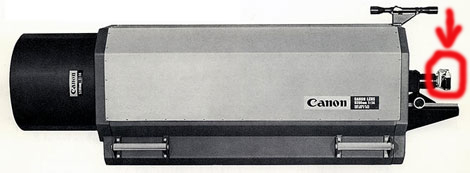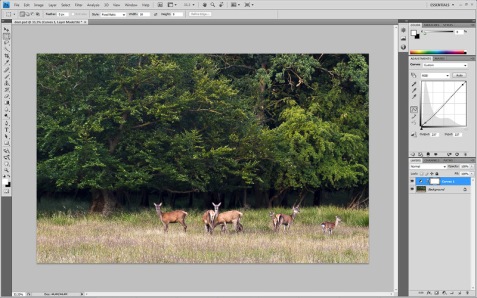Speaking of lenses, here’s a real blast from the past I came by over at eBay. Not a toy, and far from inexpensive, it doesn’t even matter if you’re already shooting a Canon system, because the cost of the camera body would be infinitely insignificant in comparison…
This lens uses two aiming telescopes, just to help you focus it… Apparently it was produced in very, very low quantities in the early 60s – 1962 to be exact.
From Canons own info:
This is the only ultra-telephoto lens in the world capable of taking photographs of objects 18 to 32 miles away (30km to 52kms away). Having a focal length of 5200mm, Canon Mirror Lens 5200mm can obtain one hundred times as large an object image as that of a 50mm lens.
For focusing this mounted or fixed lens on an extremely distant object, two aiming telescopes are set on the side of the lens barrel, and the entire lens is placed on a rigid stand which rotates smoothly. Minimizing the overall length had been a big problem in designing this lens. However, the Catadioptric system that is applied to the other two Canon mirror lenses has succeeded in reducing it down to one third of the nominal focal length. In general focal length and optical aberration increase with each other, however, our long and persistent research and development have succeeded in solving this problem. Canon mirror lens 5200mm composed of spherical main and secondary mirrors and a correction lens would assure you of clear images.
First of all, the claim that this is the only telephoto lens to be able to produce a photo of an object more than 30kms away is, ofcourse, bullocks. As some of you may well know, the earth is round, and the curvature of the earth is blocking your view of anything that far away. Should you, with the help of your well-trained army of assistants, manage to point this thing upwards, you’ll no doubt be able to take some nice moon shots, but many other telephoto lenses are able to do this, even though the moon is about 385000 kms away!
Secondly, whatever chinese spying program this was part of, them now decommissioning it probably means there’s even larger and better optics available.
You know what they say about the size of ones lens…







